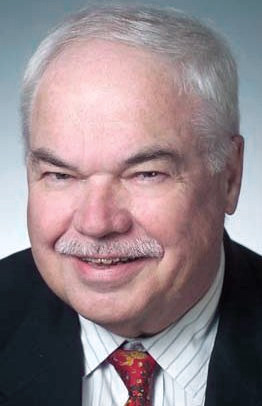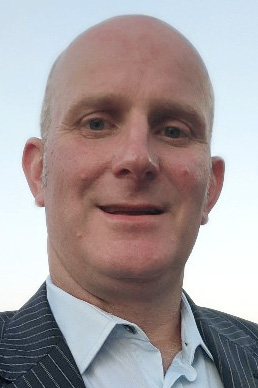

Domain Names |
Sponsored by |

|
 ICANN has announced that they will be having a Special Meeting of the ICANN Board on 19 February 2010 (3:00 UCT) to discuss the "upcoming ICANN International meeting." It is reasonable to assume that the 17 February 2010 security update will be a topic of discussion... I trust that the ICANN Board will make the right decision balancing the obligations that ICANN has to the global Internet community, with the safety and security of those ICANN stakeholders that participate in person at these ICANN events. However, the ICANN Board needs to gain the trust of the global community in connection with this and other important decisions that it will be making.
ICANN has announced that they will be having a Special Meeting of the ICANN Board on 19 February 2010 (3:00 UCT) to discuss the "upcoming ICANN International meeting." It is reasonable to assume that the 17 February 2010 security update will be a topic of discussion... I trust that the ICANN Board will make the right decision balancing the obligations that ICANN has to the global Internet community, with the safety and security of those ICANN stakeholders that participate in person at these ICANN events. However, the ICANN Board needs to gain the trust of the global community in connection with this and other important decisions that it will be making.
 Do you keep hearing about this Registry/Registrar Separation (or Vertical Integration) issue but really aren't sure what it's all about? This post should help you to get a better understanding of the details of this saga which is one of the most controversial, yet still unresolved issues within the new gTLD program.
Do you keep hearing about this Registry/Registrar Separation (or Vertical Integration) issue but really aren't sure what it's all about? This post should help you to get a better understanding of the details of this saga which is one of the most controversial, yet still unresolved issues within the new gTLD program.
 At the beginning of last year, MarkMonitor participated in VeriSign's beta program to test server-level protections which were designed to mitigate the potential for unintended domain name changes, deletions and transfers. When VeriSign finally released their Registry Locking Program to all registrars, I expected to see the owners of highly trafficked sites flocking to this new offering. However, after a review of the top 300 most highly trafficked sites, I was shocked to uncover that less than 10% of these valuable domains were protected using these newly available security measures.
At the beginning of last year, MarkMonitor participated in VeriSign's beta program to test server-level protections which were designed to mitigate the potential for unintended domain name changes, deletions and transfers. When VeriSign finally released their Registry Locking Program to all registrars, I expected to see the owners of highly trafficked sites flocking to this new offering. However, after a review of the top 300 most highly trafficked sites, I was shocked to uncover that less than 10% of these valuable domains were protected using these newly available security measures.
 For more than a decade, aggressive website registrants have been engaged in 'typosquatting' -- the intentional registration of misspellings of popular website addresses. Uses for the diverted traffic have evolved over time, ranging from hosting sexually-explicit content to phishing. Several countermeasures have been implemented, including developing policies for resolving disputes. Despite these efforts, typosquatting remains rife. But just how prevalent is typosquatting today, and why is it so pervasive? (Co-authored by Tyler Moore and Benjamin Edelman)
For more than a decade, aggressive website registrants have been engaged in 'typosquatting' -- the intentional registration of misspellings of popular website addresses. Uses for the diverted traffic have evolved over time, ranging from hosting sexually-explicit content to phishing. Several countermeasures have been implemented, including developing policies for resolving disputes. Despite these efforts, typosquatting remains rife. But just how prevalent is typosquatting today, and why is it so pervasive? (Co-authored by Tyler Moore and Benjamin Edelman)
 One of the most debated questions at the time of the opening of the .eu Top-Level Domain (TLD) was whether or not it was possible to register names on the basis of prior rights on signs which include special characters, such as an ampersand. The Advocate General of the Court of Justice of European Union has just published his opinion (4 years later...)
One of the most debated questions at the time of the opening of the .eu Top-Level Domain (TLD) was whether or not it was possible to register names on the basis of prior rights on signs which include special characters, such as an ampersand. The Advocate General of the Court of Justice of European Union has just published his opinion (4 years later...)
 In 1998, the United States government might have taken a different path in asserting its control over the technical administration of the DNS. It might have asserted full U.S. governmental control, or it might have turned over the functions to an international body such as the International Telecommunications Union. Instead, it created a "private-public partnership", incorporated as a California "nonprofit public benefit corporation", with a charter giving the company a dual mission of quasi-governmental functions combined with responsibility for operational stability of the Internet.
In 1998, the United States government might have taken a different path in asserting its control over the technical administration of the DNS. It might have asserted full U.S. governmental control, or it might have turned over the functions to an international body such as the International Telecommunications Union. Instead, it created a "private-public partnership", incorporated as a California "nonprofit public benefit corporation", with a charter giving the company a dual mission of quasi-governmental functions combined with responsibility for operational stability of the Internet.
 Over time, people have grown accustomed to most Web site addresses ending in .com, .edu or .gov. Yet a proposed expansion of the generic top-level domain (gTLD) space by the Internet Corporation for Assigned Names and Numbers (ICANN) will change the way we look at domain names forever... For businesses, this change means that protecting their trademarks and searching for and watching gTLDs will become increasingly complex.
Over time, people have grown accustomed to most Web site addresses ending in .com, .edu or .gov. Yet a proposed expansion of the generic top-level domain (gTLD) space by the Internet Corporation for Assigned Names and Numbers (ICANN) will change the way we look at domain names forever... For businesses, this change means that protecting their trademarks and searching for and watching gTLDs will become increasingly complex.
 SWITCH, the registry for .CH and .LI domain names, enabled DNSSEC on day two of the annual Domain Pulse conference in Luzern yesterday. SWITCH became the third ccTLD registry to enable DNSSEC giving registrants of .CH domain names added security following .SE (Sweden) and .CZ (Czech Republic).
SWITCH, the registry for .CH and .LI domain names, enabled DNSSEC on day two of the annual Domain Pulse conference in Luzern yesterday. SWITCH became the third ccTLD registry to enable DNSSEC giving registrants of .CH domain names added security following .SE (Sweden) and .CZ (Czech Republic).
 The 2010 Domain Pulse, hosted by SWITCH (the .CH registry) was held in the snowy Swiss city of Luzern. Domain Name Security (DNS) was of particular importance in this year's meeting with DNSSEC being implemented in the root zone in 2010 by ICANN, and by many registries in the next few years. ICANN plan to have all root servers signed with DNSSEC by mid-2010 Kim Davies, Manager, Root Zone Services at ICANN told the meeting, starting with the L root server, then A root server with the last being the J root server as all are gradually signed.
The 2010 Domain Pulse, hosted by SWITCH (the .CH registry) was held in the snowy Swiss city of Luzern. Domain Name Security (DNS) was of particular importance in this year's meeting with DNSSEC being implemented in the root zone in 2010 by ICANN, and by many registries in the next few years. ICANN plan to have all root servers signed with DNSSEC by mid-2010 Kim Davies, Manager, Root Zone Services at ICANN told the meeting, starting with the L root server, then A root server with the last being the J root server as all are gradually signed.
 Again on the subject of new Top-Level Domains (TLDs) ... One of the "issues" that concerned a number of people is the concept of "vertical separation". The basic idea is that domain name registries and registrars should be kept separate. While that is a wonderful Utopian ideal, the reality is that in the real world companies own other companies, people trade in stocks and shares etc., etc. So it's far from being a simple "cut and dried" situation.
Again on the subject of new Top-Level Domains (TLDs) ... One of the "issues" that concerned a number of people is the concept of "vertical separation". The basic idea is that domain name registries and registrars should be kept separate. While that is a wonderful Utopian ideal, the reality is that in the real world companies own other companies, people trade in stocks and shares etc., etc. So it's far from being a simple "cut and dried" situation.